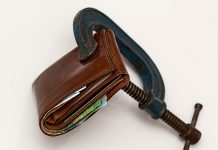When an individual carries multiple debts, how do they decide which debt to repay first? There are several ways to go about it. Here are three you can decide which method is best for you.
The Debt-snowball method
With the snowball method you start by paying off your smallest debts and then take the money you were paying towards those debts and pay off the next smallest debts until all your debt is paid off. (Think of rolling a snowball to make a snowman, it starts small and gets big) Simply list your debts from smallest to largest. Allocate as much of your monthly budget as you can to eliminate debt. Make minimum payments on all the other debts. Pay as much as you can towards the first debt on your list. Once it is gone you’re going to take that amount and apply it to your next debt. Each debt you pay off will allow you to put more towards the next. This is why it is called the debt snowball, because it starts small and gets big.
The reasons this works is because when you start paying down all this little debts you will feel better and get excited about paying down more debt. Sometimes all those little debts cause just as much stress as things like your mortgage.
The downside to this approach is you will pay more over time in interest. But if you get discouraged and quit you will pay a lot more in interest.
A 2012 Northwestern University study of nearly 6,000 debt settlement clients found that, all else equal, how many accounts a person has paid off is a better predictor of eventual success than how much of the balance remains.
There’s abundant evidence that human beings — even the smart ones — are not the most logical creatures. If a debt snowball offers the kind of reinforcement that will keep you motivated, it’s worth the premium to get your finances on track.
Debt avalanche Method, also called debt stacking.
The way to save the most money is to use the debt avalanche approach. With this method you list all your debts with the highest interest ones first. What can be frustrating with this approach is that those smaller debts will my linger if they are not your highest interest rate.
Hybrid Method
The method that has worked for me and I recommend is using both these approaches together. Start with snowball approach and pay down your small debts first. After you pay these down you are going to feel a little less stressed and not you can start paying down the higher interest rate debts. With less stress you can focus on ways to make more or to save more.
Cash Flow method.
You may want to target the debt that by paying off will increase your cash flow the most. This may not be your highest or lowest interest debt. It is debt that is going to give you the most margin in your finances.
Before you start
Calculate all your monthly obligations…
You can list them on a sheet of paper but as an accountant I would recommend you list them in a spreadsheet. If you do a google search you will find several spreadsheets that you can start using right away. List your debts; include the total amount, the minimum payment, and the interest rate. If you have a lot of debts I would certainly start with the snowball approach. You will fill much better.
Compare your list to you income, hopefully after making your minimum payments you still have income left over. If not you will need to make some other adjustments. Even while paying down debt it is important to put money towards savings.
Debt Snowflakes
Snowflakes are little bits of money found or saved by doing something different. These little snowflakes can be put towards paying down debt or building an emergency fund. Eventually like the snowball these snowflakes can add up and make a big difference. Some examples of snowflakes are A yard sale, an unexpected rebate check, extra money earned from doing a side job, or change found in you couch cushions or in your dry cleaning pockets.
Often these snowflakes get spent and melt away. If we can protect these snowflakes it will give them a chance to grow.
What tools have you used to help pay off debt.








